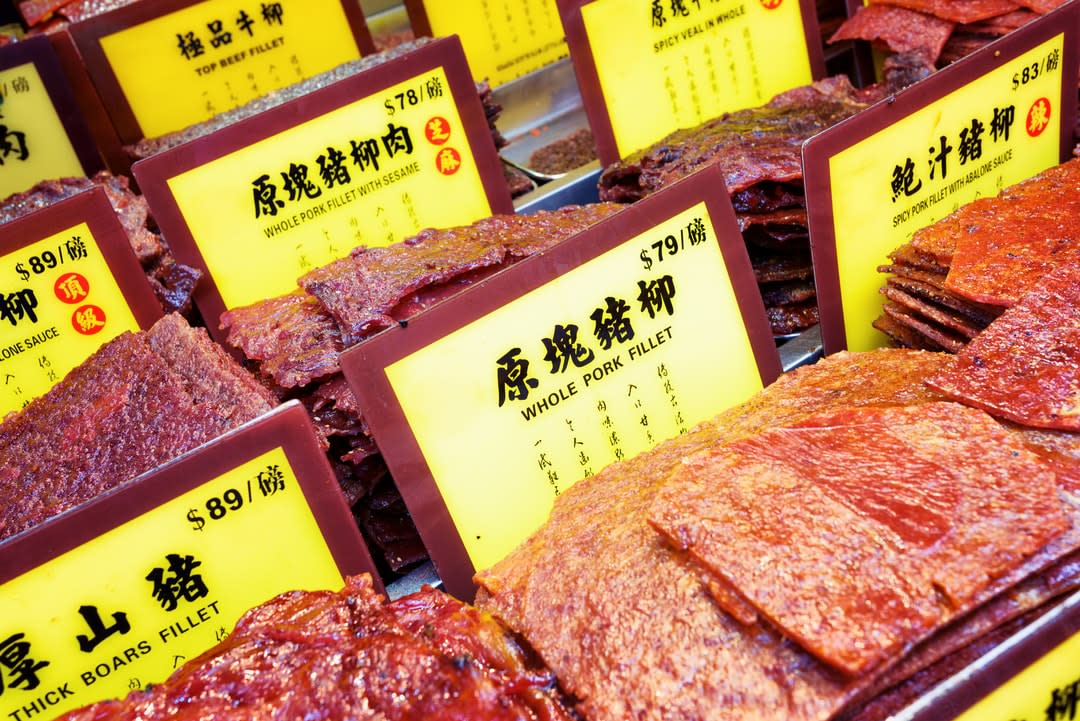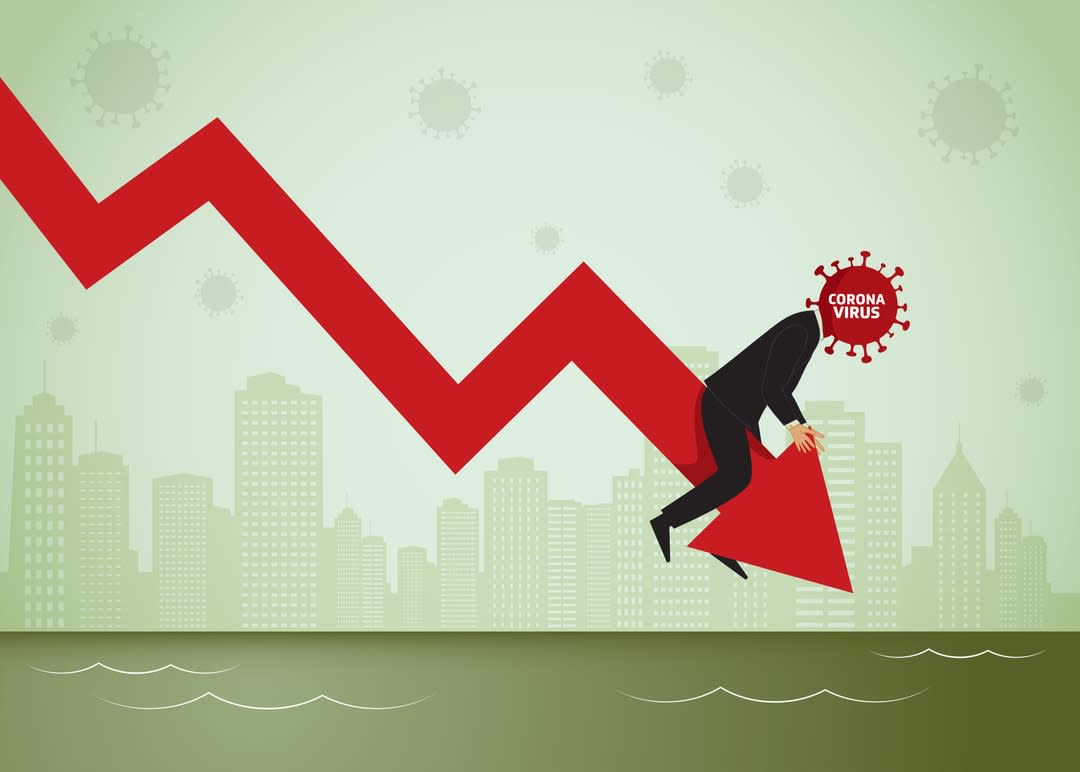The coronavirus pandemic: Exposing the faultlines of unfettered globalisation
In these hectic days of the coronavirus pandemic, I'm frequently asked how bad can it get for the global supply chains, and what's the worst-case scenario for Australia’s economic system?
My short answer is that COVID-19 can trigger a global monetary crisis with the potential to bring severe income deflation to Australia’s superannuated middle and working classes.

An exemplary case in point is the current shock to China’s pork supply chain.
Already beleaguered by the Swine Flu from last year and due to COVID-19 lockdowns, Chinese farmers have lost half of their herds, and now are even running out of animal feed that is held up in logistical logjams.
This is pushing meat and crop prices up in China and beyond, while diminishing consumer confidence in the safety of cheaper food elsewhere.
Lost amid the medical news, under-the-radar Chinese authorities are taking the ground-breaking step of loosening agri-food import restrictions.
This could crack open one of the last frontiers of international trade dealings, and surely the US administration will seek to exploit China’s vulnerability to pursue further unilateral measures that favour its own core sections of global supply chains.
Most importantly, though, the fall in Chinese supply will push demand from other sources to fill the large gaps being formed in the global supply chain of meat and crops.
Eventually, low- and middle-income Australians risk being pushed to the global economy periphery.
On the surface this sounds good for our economy, as there will be further export opportunities for Australian produce that's perceived safe and of good quality. Indeed, just recently, China unilaterally lifted the ban on US poultry products and waived some tariffs on pigs and soybean products.
However, with the Chinese racking up the market, eventually Australian consumers will face a steep increase in the price of meat products and by-products.
To make things worse, increasing food prices globally will compound with a falling Australian dollar and weak job market, thus making domestic consumption both more expensive and much less profitable than exports.
Eventually, low- and middle-income Australians risk being pushed to the global economy periphery, as they'll work for less and less money in real-value terms to produce goods mainly destined for the consumption of the core sectors in the world economy.
Moreover, we'll see the further abandonment of the production of goods that ordinary Australians would gladly consume at affordable price, but have no sufficient export value margins.
Such production shift will occur regardless of the impact on local jobs and domestic consumption, which in turn will become more reliant on more expensive imported products, in a perverse but highly profitable cycle of market exploitation by large multinational players in the core world economies.
Beyond food
This dynamic can also occur for any other goods and services, insofar as they are tied to breaking global supply chains.
Now that we know how the worst could happen on the ground, what about on a deeper systemic level?
Why would the international economic order suddenly turn so nasty for a country such as Australia that has grown so wealthy in the era of globalisation?
Lenin was said to have declared that the best way to destroy the capitalistic system was to debauch the currency.

In the worst-case scenario, the disruption to global supply chains caused by the spread of COVID-19 – or any type of global crisis we may have next, for that matter – is poised to do precisely that in three successive stages centred on:
- increased supply price
- reduced value of money
- income deflation.
All three factors are moving from the periphery to core areas of the world economy.
First, the COVID-19 pandemic crisis is increasing demand for goods that can only be met by moving production to places with inferior opportunity costs. Coupled with larger than ever capital accumulation amassed in leading world economies after decades of globalised economic growth, countries such as Australia are on the front line to experience an increasing supply price.
In fact, capital accumulation typically triggers more demand for commodities necessary to sustain economic growth and, in turn, further increases to supply cost.
Second, once the supply price of most commodities has significantly increased in an economy with a great deal of capital accumulation, the value of money comes under threat.
In fact, the globalised economy based on free trade and foreign investment hinges on money; that is, on trading assets tied to money as a store of wealth – think of stock securities and, as prominently in Australia, superannuation funds.
We know that money functions as a medium for transactions precisely because it's a store of wealth. The value of money is thus measured by how many goods it can buy over a certain period of time.
It then follows that when the general price of goods is low, the value of money is high – and when the general price of goods is high, the value of money is low.
This means that increasing the supply price of goods in economies glutted by capital accumulation tends to devalue money. When this happens, people and firms have an incentive to hold on to goods rather than money, thus undermining its function as a medium of transaction. This is clearly unsustainable for the globalised economy, and threatens its very reason for being.
Increasing food prices globally will compound with a falling Australian dollar and weak job market, thus making domestic consumption both more expensive and much less profitable than exports.
Third, as history shows (think the great depression in the 1920s), when the monetary system of core world economies breaks down under the increasing cost of supply, the international economic order begins to break down due to the lack of confidence by people, governments and investors.
How can we avoid this systemic destruction of the leading actors that most profit from globalising economies?
Again, history shows there's only one way: the core has to compress demand by income deflation in the periphery, which means the reduction of purchasing power and consumption choice of populations pushed to the margins of globalisation.
Lesson in history
In more familiar terms, you may recognise income deflation in various historical incarnations that have unfailingly accompanied the cyclical crises of capitalism since its very inception, namely:
- The enclosure of the commons at the eve of the industrial revolution in England, which made merchants rich and peasants destitute, thus laying the foundations of the British Empire
- Slavery and colonialism at the peak of European economic expansion worldwide, which depleted southern communities
- Free trade and investment in the mature age of the liberal economic order; a global version of the commons enclosure that disproportionately enriched elites in the Western core economies
- The unfettered financialisation of entire economic systems in the era of hyperglobalisation, which is securitising all kinds of productive activities and in the process impoverishing middle and working classes even in the Western core.

All these historical versions of income deflation have thus enabled globalising capitalism to preserve and evolve a market ecosystem in which supply price is low and the value of money is high in the core world economies, whereas in the peripheral economies, purchasing power is reduced and production for goods not in demand by the core is abandoned.
In those instances, the clear losers of globalising market expansions were first and foremost petty producers and workers in pre-capitalist underdeveloped countries.
What's changed nowadays is that the losing periphery is moving towards developed economies, as recently made evident by the manufacturing decline, low wages growth and migration crises that variously affect many Western countries, including Australia.
What should we do about it?
Perhaps it’s about time to abandon stale supply-side policy and thoroughly rethink fiscal strategies that can sustain small, innovative businesses and the actual living standards of working people. But that's another story.





